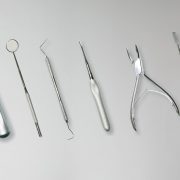Dentists spend long hours in a sustained “high gear” state — mentally sharp, physically tense, and emotionally composed. Over time, this contributes to fatigue, burnout, and even musculoskeletal strain. In this article, the concept of micro-resets is introduced— brief, science-backed techniques that can be done in under a minute between patients to help dentists stay focused, reduce tension, and support long-term career sustainability.
Between patients, procedures, and paperwork, dentists spend long hours in a state of sustained focus. But what many don’t realize is that this constant “on” mode—mentally sharp, physically tense, emotionally composed—takes a toll on the nervous system.
It’s not always visible, but it shows up in the background:
- Clenched jaws and aching shoulders
- Mental fatigue midway through the day
- Shallow breathing and restlessness
- Trouble unwinding after work
The good news? You don’t need an hour of meditation or a day off to reset.
What you need are micro-resets.
What’s a Micro-reset?
A micro-reset is a brief, intentional nervous system shift—done in 60 seconds or less—that helps move you out of tension and into clarity. These resets can be done between patients, while washing hands, or even while seated in the operatory chair.
Think of it like a pit stop for your brain and body, just enough to recalibrate and keep your performance sharp throughout the day.
The Science Behind It
As a physiotherapist, we refer to a 3 Gears Model of nervous system performance, which says that your system works in gears, much like a car:
- High Gear (fight/flight): Alert, reactive, tense
- Optimal Gear: Clear, calm, responsive — where steady focus and peak mental and physical performance thrive
- Low Gear (shutdown): Fatigued, withdrawn, checked-out
Dentists often live in High Gear, which is useful for performance, but harmful if sustained without recovery. Micro-resets help bring your system back into Optimal Gear, where you make better decisions, feel more present, and experience less tension.
Try This: The 60-Second Anchor Breath Reset
This reset is simple, portable, and grounded in proven breathing science. It activates your parasympathetic nervous system—your body’s natural “reset button.”
How to do it:
- Slow it down – Aim for at least a 4–5 second inhale and exhale
- Nasal breathing—unless you have a nasal obstruction or medical reason
- Sit or stand tall –Posture affects how efficiently you breathe
- Soften your belly – Allow it to move freely with each breath
Try 3 Anchor Breaths between patients, while charting, or even while washing your hands. That’s all it takes to start shifting gears.
Why It Matters
Over time, these brief resets:
- Reduce cumulative stress and physical tension
- Improve focus and presence with patients
- Prevent burnout by building in real-time recovery
- Support long-term performance and career longevity
Recovery doesn’t have to be a vacation. It can be 60 seconds of breath between tasks.
Want More?
I created a free Reset Map with the 3 Gears visual and a breakdown of the Anchor Breath technique. Download it here: https://www.resiliencetactics.com/staysharp.
Or, if you’d like to offer a short live session for your study club or team, feel free to reach out.
Author Bio
Sharmila Acharya, PT, has been a physical therapist for 25 years with certifications in yoga, meditation, clinical hypnosis and trauma-informed practices. She is the founder of Performance & Resilience Tactics.




















Comments